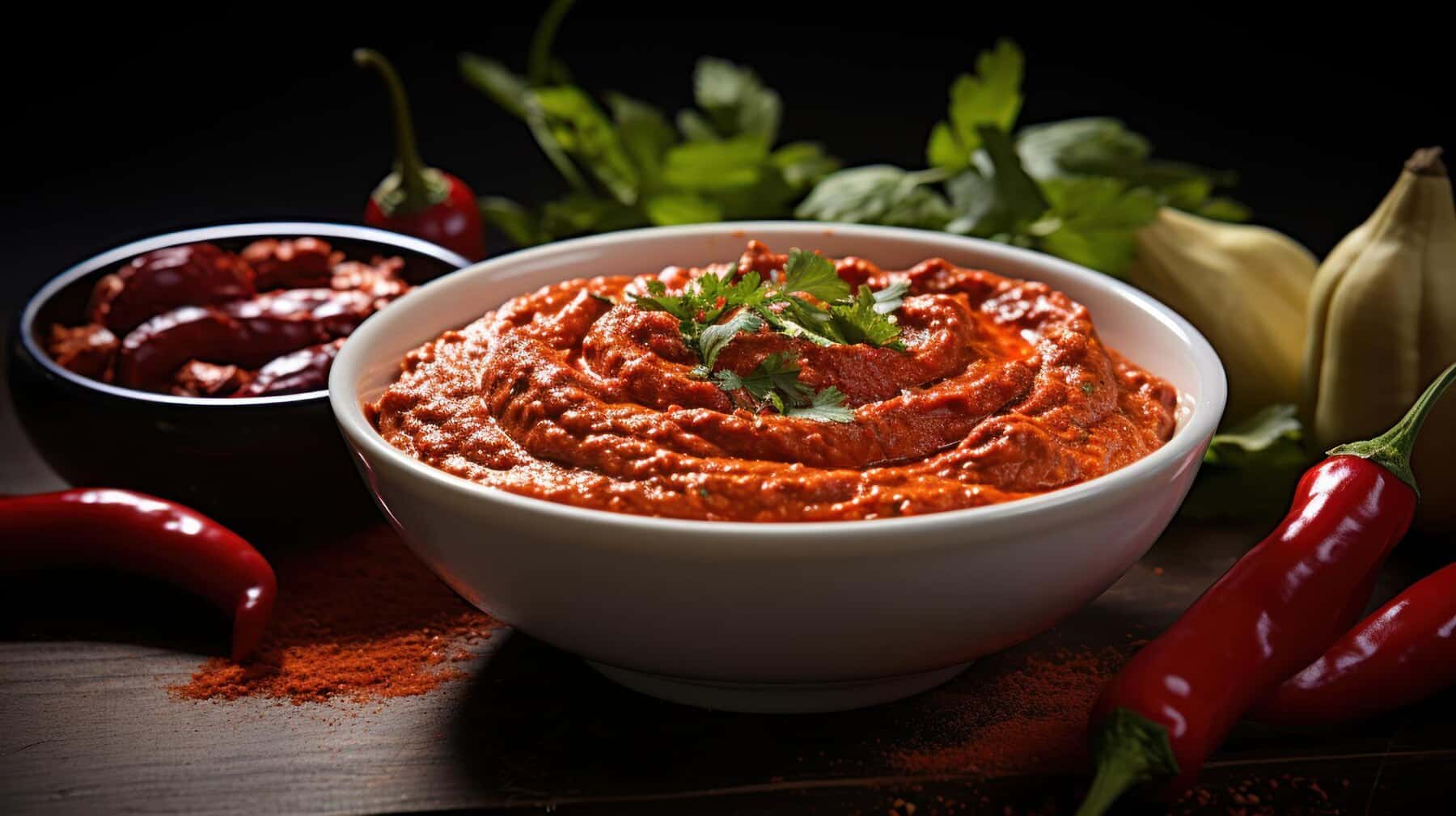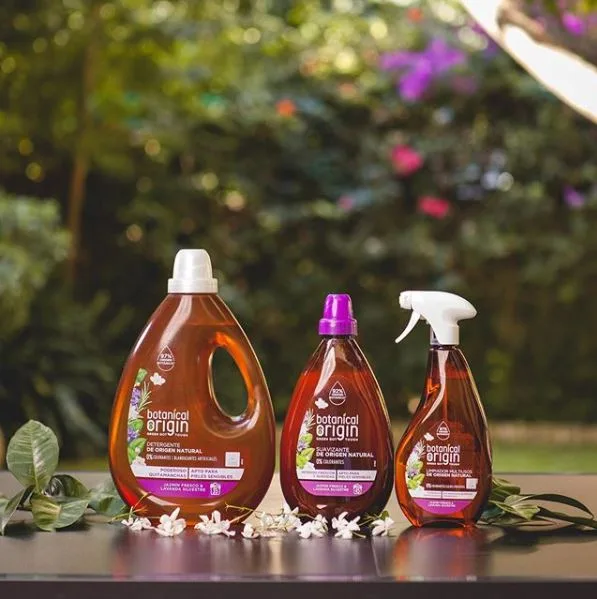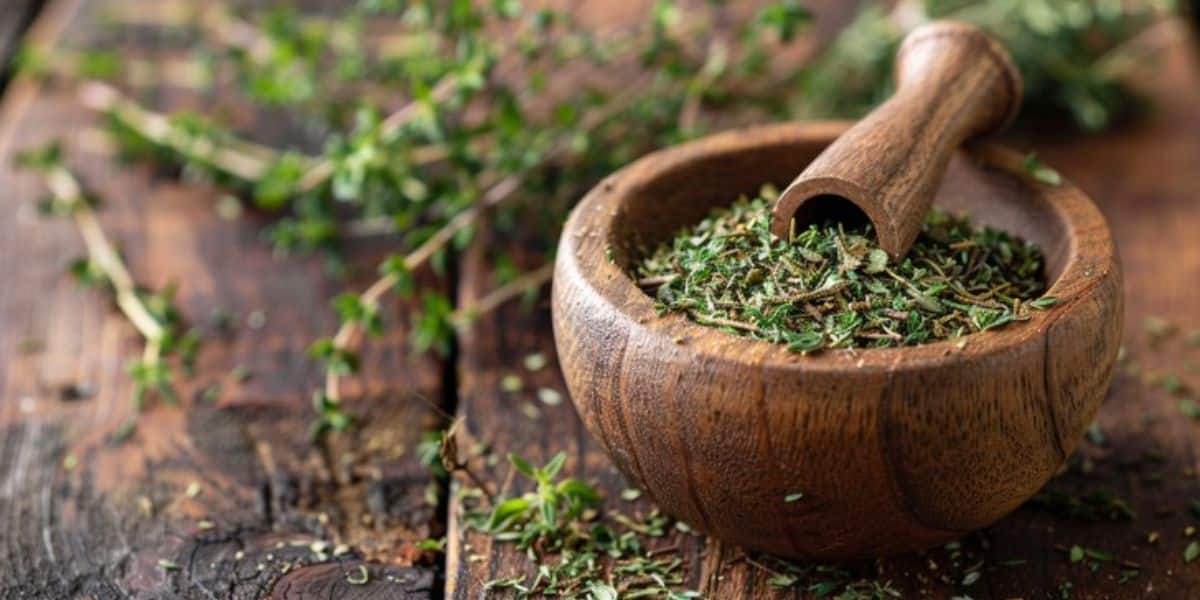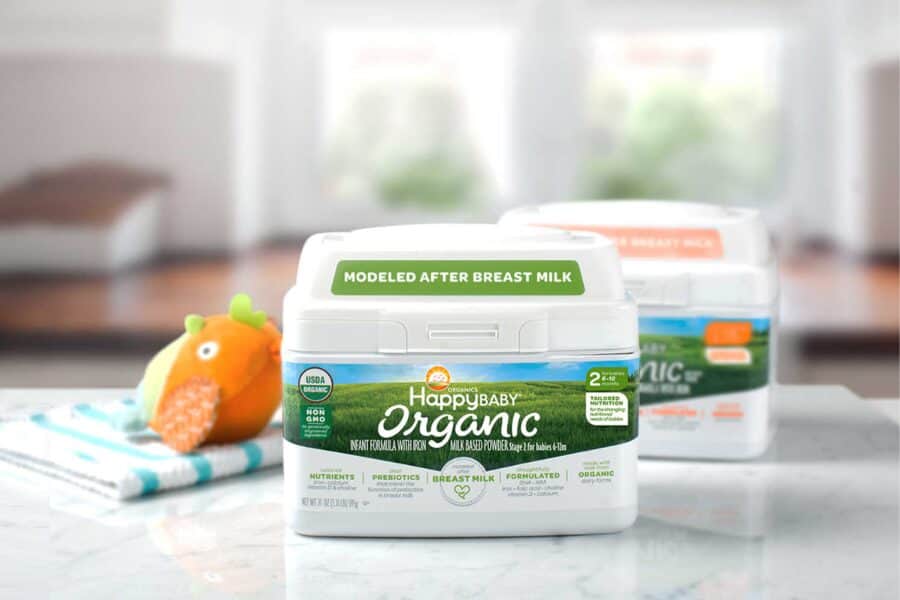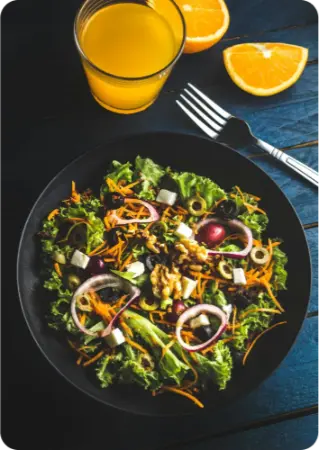Did you know that harissa paste is protected by the U.N? In 2022, UNESCO declared this brick red, and vibrant chilly paste as “an integral part of the food traditions of Tunisian society.”
Harissa paste, with its fiery red hue and bold flavor profile, has long been cherished in kitchens around the world for its ability to add depth and heat to dishes. However, Tusnian society is discouraging the rampant commercialisation of this sauce, which is so much more than a business venture to them.
If you want to recreate the magic of the paste without sabotaging the conversation efforts, we have a list of six outstanding harissa paste substitutes. Let’s get to it.
What is Harissa Paste?

Harissa paste, a staple in North African cuisine, is much more than a condiment – it’s a cultural icon deeply rooted in the culinary traditions of the region. With its roots in Tunisia, harissa has gained significant culinary influence in North America within the last 20 years.
Whether slathered on grilled meats, stirred into stews, or used as a dipping sauce for bread, harissa adds depth and character to dishes, transforming ordinary meals into culinary delights.
Beyond its culinary significance, harissa holds a special place in cultural celebrations and gatherings. From festive feasts to everyday meals, it brings people together, fostering a sense of community and shared identity.
Why You Should Be Seeking Harissa Paste Substitutes
While harissa paste embodies the rich cultural heritage of North Africa, its production is not without sustainability challenges, particularly concerning the sourcing of traditional ingredients.
One of the primary ingredients in traditional harissa paste is the chili pepper, which often requires extensive water and pesticide usage during cultivation. In regions already grappling with water scarcity and environmental degradation, the cultivation of chili peppers for harissa production can exacerbate these issues, leading to soil depletion and biodiversity loss.
Consumers are increasingly aware of the environmental implications of food production, including issues such as water usage, pesticide use, and carbon emissions. By exploring sustainable alternatives and supporting ethical sourcing practices, we can ensure that the cultural heritage embodied by harissa paste remains vibrant and resilient for future generations.

6 Harissa Paste Substitutes for Sustainable Cooking
For whatever reasons, once you’re in the market for harissa paste substitutes, you’ll find that your options are plenty.
Whether it’s whipping up a spicy new sauce variant with pantry staples, or stepping up your palette to try new out new options, here are some of the leading harissa paste substitutes:
Smoked Paprika and Cayenne Pepper Blend

Smoked paprika and cayenne pepper, both commonly found in household spice racks, can be blended together to create a flavorful substitute for harissa paste. You get the smoky, earthy flavor from the smoked paprika, along with a spicy kick from the cayenne pepper.
This paste can be used as a seasoning for meats, vegetables, soups, stews, marinades, and sauces.
Sriracha Sauce

Sriracha is a Thai chili sauce made from chili peppers, vinegar, garlic, sugar, and salt, resulting in a tangy, slightly sweet, and spicy sauce with a smooth texture.
While sriracha sauce may not be a traditional substitute for harissa paste, its convenient availability and bold flavor makes it an outstanding option for everyday use.
Gochujang Bean Paste

Gochujang is a fermented Korean chili paste made from chili powder, glutinous rice, fermented soybeans, and salt. It’s known for its complex flavor profile, which is both spicy, savory, and slightly sweet. Gochujang is a staple ingredient in Korean cuisine, used in a wide variety of dishes such as bibimbap, tteokbokki, and bulgogi marinades.
Homemade gochujang bean paste may have a slightly different flavor and texture compared to store-bought versions, but it’s a fun and rewarding project to make at home. Adjust the amount of Korean red chili powder according to your desired level of spiciness.
Red Pepper Flakes and Tomato Paste

You won’t find a more sustainable harissa paste substitute than making this simple, 2 ingredient red pepper flakes and tomato paste.
Red pepper flakes makeup for heat and spice characteristic of harissa paste, while tomato paste adds depth of flavor and a hint of sweetness. By using ingredients that are often overlooked or underutilized, you can reduce food waste and create delicious sauces and marinades with minimal effort.
Chipotle Peppers in Adobo Sauce

We can’t talk about chilly pastes without mentioning Mexican and Tex-Mex cuisine’s best-rated Chipotle peppers in adobo sauce. The sauce is made from smoked and dried jalapeño peppers that are rehydrated and stewed in a tangy, slightly sweet, and spicy tomato-based sauce called adobo.
Chipotle peppers in adobo sauce can be used as a flavoring agent in various dishes, such as marinades, sauces, soups, stews, and dips. They add a smoky, spicy kick along with a rich and tangy flavor profile. Adjust the amount of chipotle peppers used according to your desired level of spiciness.
Aleppo Pepper Paste
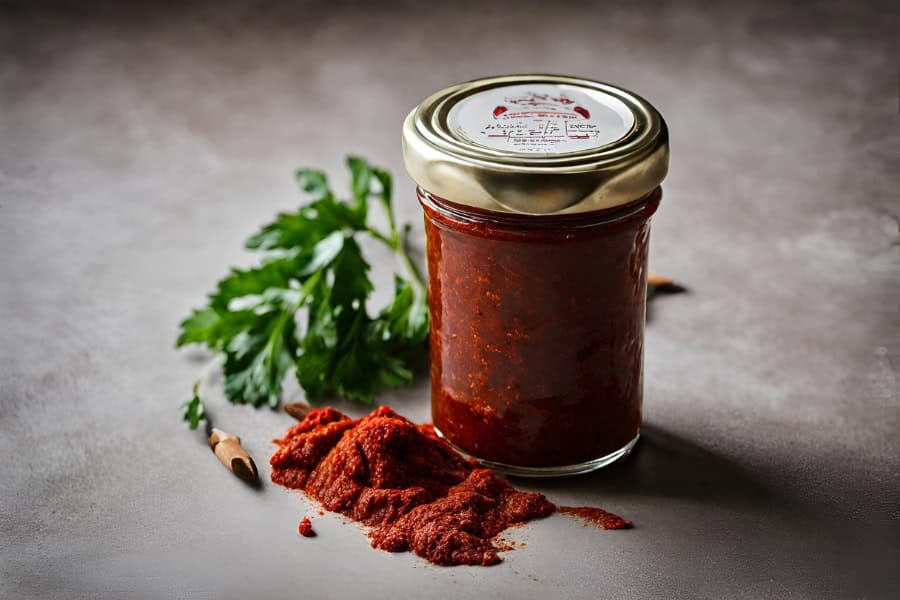
Aleppo pepper is a very special chili pepper grown in the Middle East, particularly in Syria and Turkey. It’s named after the city of Aleppo in Syria. The peppers are mild to moderately spicy flavor, and carry subtle fruity undertones.
Aleppo peppers are heavily used in Middle Eastern and Mediterranean cuisine. They add a unique flavor to dishes like kebabs, salads, and dips. While they might lack in sizzling chilly flavor, this paste is prized for its balance of heat and complexity, which makes it a versatile addition to many recipes.
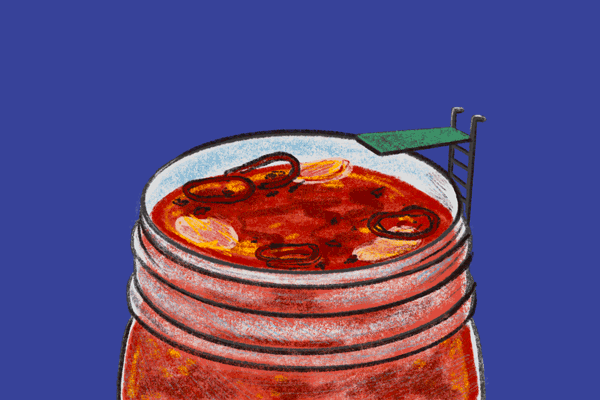
How To Make Harissa Paste At Home
Homemade harissa paste is perfect for adding a spicy, smoky kick to a variety of dishes, such as marinades, sauces, dips, and spreads. When you make it at home, you can tailor the flavor, control the spice levels, and support the farm to table movement. Here’s how you can make it at home:
List of Ingradients To Make Harissa Paste At Home
- 12 – 16 Dried red chili peppers (adjust depending on desired spice level)
- 3 cloves garlic, minced
- 1 teaspoon ground cumin
- 1 teaspoon ground coriander
- 1 teaspoon caraway seeds
- 1 teaspoon smoked paprika
- 1/2 teaspoon salt, or to taste
- 2 tablespoons olive oil
- 1 tablespoon tomato paste
- 1 tablespoon lemon juice, freshly squeezed
- Water (as needed for desired consistency)
Step By Step Process for Making Harissa Paste At Home
- Step 1: Preparing the dried chili peppers. Remove the stems and seeds, then place them in a bowl and cover with hot water. Let them soak for about 20-30 minutes until softened.
- Step 2: Soak the chili peppers, toast the cumin seeds, coriander seeds, and caraway seeds in a dry skillet over medium heat for 2-3 minutes until fragrant. Let them cool, then grind them into a fine powder using a spice grinder or mortar and pestle.
- Step 3: Once the chili peppers are softened, drain them and transfer them to a food processor or blender. Add the minced garlic, ground spices, smoked paprika, salt, olive oil, tomato paste (if using), and lemon juice to the food processor or blender.
- Step 4: Blend the ingredients until you have a smooth paste, scraping down the sides of the bowl or blender as needed. If the mixture is too thick, you can add more olive oil until you reach your desired consistency.
- Step 5: Taste the harissa paste and adjust the seasoning if necessary, adding more salt or lemon juice if needed.
Once you’re satisfied with the consistency, transfer the harissa paste substitute to a clean glass jar or airtight container. Store it in the refrigerator for up to two weeks.
Supporting Local Farmers and Artisans With Everyday Decisions
Local farmers often use eco-friendly farming methods that minimize chemical inputs, conserve water, and promote soil health. By buying directly from these producers, you can ensure that your ingredients are grown and sourced in a way that respects the environment and supports local communities.
Incorporating these sustainable practices into your cooking not only enhances the flavor and quality of your meals but also promotes environmental stewardship and community resilience.
Summing Up!
We mentioned six harissa paste substitutes and a homemade recipe in this blog. Each of these substitutes offers its own unique flavor profile and benefits, which allows you to experiment and find the perfect fit for your dishes. By incorporating harissa paste substitutes into your cooking repertoire, you’re not only expanding your culinary horizons but also taking a step towards more eco-friendly practice
Sustainable cooking is about more than just everyday products and practises – it’s a mindset that extends to every aspect of our culinary journey. It’s about supporting local farmers and artisans, reducing packaging waste, and embracing seasonal and organic produce. You can start small by checking out our guide to seasonal fruit eating!
Frequently Asked Questions
Can I make my own harissa paste substitutes?
Absolutely! Making your own harissa paste substitutes at home allows you to customize the flavor, control the ingredients, and reduce packaging waste. Experiment with different combinations of spices, peppers, and other ingredients to create your perfect homemade substitute.
Where can I find harissa paste substitutes?
Harissa paste substitutes can be found in grocery stores, specialty food stores, online retailers, and homemade recipes. Look for brands that prioritize sustainable and ethically sourced ingredients, or try making your own substitutes at home using pantry staples.
How can I use harissa paste substitutes in my cooking?
Harissa paste substitutes can be used in a variety of dishes, including marinades, sauces, dips, spreads, and as a flavor enhancer for meats, vegetables, grains, and more. Get creative and explore different ways to incorporate substitutes into your favorite recipes.
